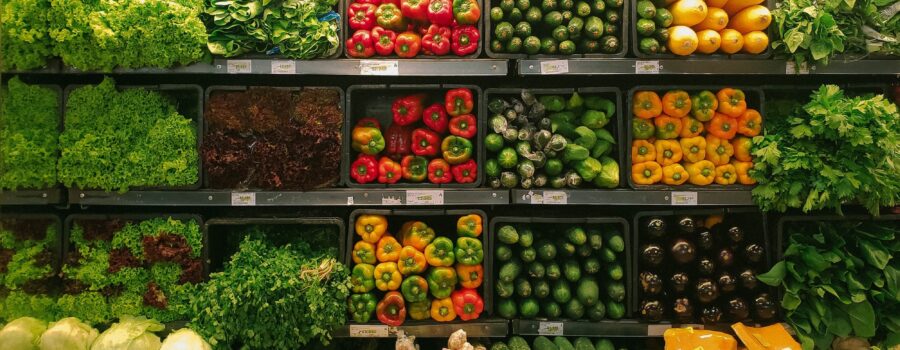With all the extra time at home this year, most of us are cooking more. And that means more involved trips to the grocery store. But have you ever headed in with your sights set on healthy grocery store shopping, only to walk out with a bunch of a junk? Or have you ever achieved your healthy grocery shopping goals but had your jaw drop at your total at checkout?
Yeah, we’ve been there. So we rounded up our top tips for filling your cart with nutrient-rich, tasty food without draining your wallet.
Go with a list
If you’re serious about healthy grocery store shopping, you have to go in with the right tools. Specifically, you need a list.
Plan out your meals before you head into the store. Knowing what you need helps you stay focused. That way, it’s easier to avoid temptation. You can get what’s on your list and steer clear of other things you don’t need, helping you keep your grocery bill in check.
Stick to the outside edges of the store
Most grocers set up their stores in a specific way. They put the necessities like produce on the outside edges of the store, confident you’ll wind your way through the inner aisles to get from one side of the store to the other.
Don’t fall for it. The middle aisles are usually full of processed foods, sugary snacks, and high-salt items. Keep to the perimeter of the store as much as possible to get more of what you need and less of what you don’t.
Fill your cart with produce first
Hit the produce section of your grocery store first. And spend some time there. We don’t recommend impulse shopping in other parts of the store. But whenever you try a new type of produce, you’re getting extra nutrients your body needs.
Be adventurous with your produce shopping. And try to fill your cart with fruits and veggies. You’ll bring home a colorful bounty and you’ll leave less space for junk.
Know what to look for on labels
If you do venture into those middle aisles and look at some packaged food, take a second to check the label. In all of about 10 seconds, you can see if something will tank your daily totals for sodium, sugar, or fats.
There are two more quick things to check. First, check serving sizes. Those cookies might seem like they only have a little bit of sugar, but if the recommended serving size is a half a cookie, they’re just going to tempt you.
Also, avoid trans fats.
For more help understanding labels — what to look for and what to avoid — check out this guide from the American Heart Association.
Go frozen
Food waste is a huge problem, not just for us as a country but also for our wallets. Why spend money on something you might literally throw in the trash a week later?
If you know you’re prone to dumping a fuzzy carton of berries, grab more from the frozen section. Frozen produce is just as healthy as fresh but you don’t run the risk of it going bad seemingly overnight.
We hope these tips help you!
We’re here to help in other ways, too. If you want to talk to a mental health professional about anything you’re thinking or feeling, get in touch with our team today.





